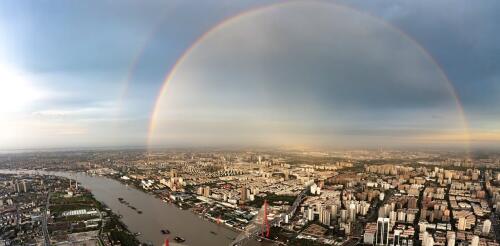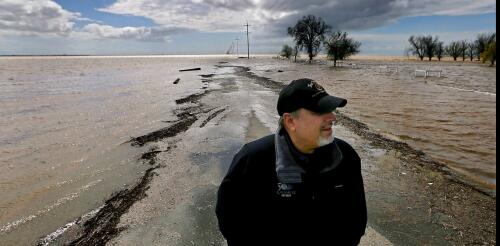Storms
Millions of Americans have been watching with growing alarm as their homeowners insurance premiums rise and their coverage shrinks. Nationwide, premiums rose 34% between 2017 and 2023, and they continued to rise in 2024 across much of the country. To add insult to injury, those rates go even higher if you make a claim – as much as 25% if you claim a total loss of your home. Why is this happening? There are a few reasons, but a common thread: Climate change is fueling more severe weather, and insurers are responding to rising damage claims. The losses are exacerbated by more frequent extreme weather disasters striking densely populated areas, rising construction costs and homeowners experiencing damage that was once more rare. Hurricane Ian, supercharged by warm water in the Gulf of Mexico, hit Florida as a Category 4 hurricane in October 2022 and caused an estimated $112.9 billion in damage. Ricardo Arduengo/AFP via...
Curious Kids is a series for children of all ages. If you have a question you’d like an expert to answer, send it to curiouskidsus@theconversation.com. Can rainbows form in a circle? – Henry D., age 7, Cambridge, Massachusetts The legend goes that there is a pot of gold hidden at the end of every rainbow. But is there really an “end” to a rainbow, and can we ever get to it? Most us go through life seeing rainbows only as arches of color in the sky, but that’s only half of what is really a circle of color. Normally, when you look at a rainbow, the Earth’s horizon in front of you hides the bottom half of the circle. But if you are standing on a mountain where you can see both above and below you, and the sun is behind you and it is misty or has just rained, chances are good that you will see more of the rainbow’s circle....
To get a sense of the enormous amount of water atmospheric rivers dumped on the Western U.S. this year and the magnitude of the flood risk ahead, take a look at California’s Central Valley, where about a quarter of the nation’s food is grown. This region was once home to the largest freshwater lake west of the Rockies. But the rivers that fed Tulare Lake were dammed and diverted long ago, leaving it nearly dry by 1920. Farmers have been growing food on the fertile lake bed for decades. This year, however, Tulare Lake is remerging. Runoff and snowmelt from the Sierra Nevada have overwhelmed waterways and flooded farms and orchards. After similar storms in 1983, the lake covered more than 100 square miles, and scientists say this year’s precipitation is looking a lot like 1983. Communities there and across the West are preparing for flooding and mudslide disasters as record snow begins to melt. Tulare Lake, long dry, begi...
When a powerful storm flooded neighborhoods in Fort Lauderdale, Florida, in April with what preliminary reports show was 25 inches of rain in 24 hours, few people were prepared. Even hurricanes rarely drop that much rain in one area that fast. Residents could do little to stop the floodwater as it spread over their yards and into their homes. Studies show that as global temperatures rise, more people will be at risk from such destructive flooding – including in areas far from the coasts that rarely faced extreme flooding in the past. In many of these communities, the people at greatest risk of harm from flash flooding are low-wage workers, older adults and other vulnerable residents who live in low-lying areas and who have few resources to protect their properties and themselves. I study the impact of extreme weather on vulnerable communities as an assistant professor of social work. To limit the damage, communities need to know who is at risk and how they can be better...
Meteorologists began warning about severe weather with the potential for tornadoes several days before storms tore across the Southeast and the Central U.S. in late March 2023. At one point, more than 28 million people were under a tornado watch. But pinpointing exactly where a tornado will touch down – like the tornadoes that hit Rolling Fork, Mississippi, on March 24, and towns in Arkansas, Illinois and multiple other states on March 31 – still relies heavily on seeing the storms developing on radar. Chris Nowotarski, an atmospheric scientist, explains why, and how forecast technology is improving. Why are tornadoes still so difficult to forecast? Meteorologists have gotten a lot better at forecasting the conditions that make tornadoes more likely. But predicting exactly which thunderstorms will produce a tornado and when is harder, and that’s where a lot of severe weather research is focused today. Often, you’ll have a line of thunderstorms in an envi...




